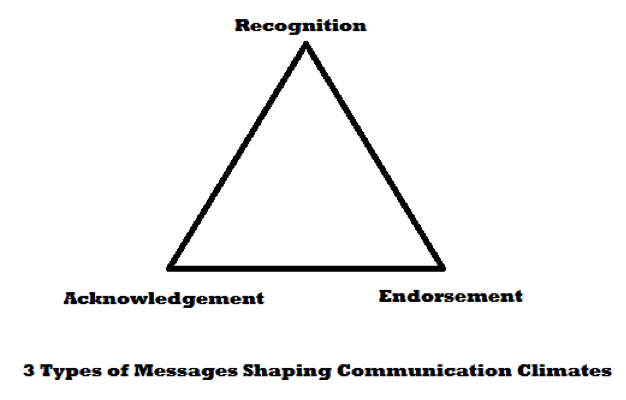Interpersonal Communication Now
“Sticks and Stones Can Beak my Bones But Words Can Hurt Me Too”
In a study published in the journal Science, researchers reported that the sickening feeling we get when we are socially rejected (being ignored at a party or passed over when picking teams) is real. When researchers measured brain responses to social stress they found a pattern similar to what occurs in the brain when our body experiences physical pain. Specifically, “the area affected is the anterior cingulated cortex, a part of the brain known to be involved in the emotional response to pain” (Fox). The doctor who conducted the study, Matt Lieberman, a social psychologist at the University of California, Los Angeles, said, “It makes sense for humans to be programmed this way. . .Social interaction is important to survival.”
Do you feel organized, or confined, in a clean workspace? Are you more productive when the sun is shining than when it’s gray and cloudy outside? Just as factors like weather and physical space impact us, communication climate influences our interpersonal interactions. Communication climate is the “overall feeling or emotional mood between people” (Wood 245). If you dread going to visit your family during the holidays because of tension between you and your sister, or you look forward to dinner with a particular set of friends because they make you laugh, you are responding to the communication climate—the overall mood that is created because of the people involved and the type of communication they bring to the interaction. Let’s look at two different types of communication climates: Confirming and Disconfirming climates.
Confirming and Disconfirming Climates
Positive and negative climates can be understood along three dimensions—recognition, acknowledgement, and endorsement. We experience Confirming Climates when we receive messages that demonstrate our value and worth from those with whom we have a relationship. Conversely, we experience Disconfirming Climates when we receive messages that suggest we are devalued and unimportant. Obviously, most of us like to be in confirming climates because they foster emotional safety as well as personal and relational growth. However, it is likely that your relationships fall somewhere between the two extremes. Let’s look at three types of messages that create confirming and disconfirming climates.
- Recognition Messages: Recognition messages either confirm or deny another person’s existence. For example, if a friend enters your home and you smile, hug him, and say, “I’m so glad to see you” you are confirming his existence. If you say “good morning” to a colleague and she ignores you by walking out of the room without saying anything, she is creating a disconfirming climate by not recognizing you as a unique individual.
- Acknowledgement Messages: Acknowledgement messages go beyond recognizing another’s existence by confirming what they say or how they feel. Nodding our head while listening, or laughing appropriately at a funny story, are nonverbal acknowledgement messages. When a friend tells you she had a really bad day at work and you respond with, “Yeah, that does sound hard, do you want to go somewhere quiet and talk?”, you are acknowledging and responding to her feelings. In contrast, if you were to respond to your friend’s frustrations with a comment like, “That’s nothing. Listen to what happened to me today,” you would be ignoring her experience and presenting yours as more important.

- Endorsement Messages: Endorsement messages go one step further by recognizing a person’s feelings as valid. Suppose a friend comes to you upset after a fight with his girlfriend. If you respond with, “Yeah, I can see why you would be upset” you are endorsing his right to feel upset. However, if you said, “Get over it. At least you have a girlfriend” you would be sending messages that deny his right to feel frustrated in that moment. While it is difficult to see people we care about in emotional pain, people are responsible for their own emotions. When we let people own their emotions and do not tell them how to feel, we are creating supportive climates that provide a safe environment for them to work though their problems.
Now that you understand that we must self-disclose to form interpersonal relationships, and that self-disclosure takes place in communication climates, we want to spend the rest of the chapter briefly highlighting some of the characteristics of the three primary interpersonal relationships in which we engage: Friendships, Romantic Relationships, and Family Relationships.
Contributions and Affiliations
- Survey of Communication Study. Authored by: Scott T Paynton and Linda K Hahn. Provided by: Humboldt State University. Located at: en.wikibooks.org/wiki/Survey_of_Communication_Study. License: CC BY-SA: Attribution-ShareAlike
- Image of 3 Types of Messages. Authored by: Spaynton. Located at: commons.wikimedia.org/wiki/File:Climates.png. License: CC BY-SA: Attribution-ShareAlike



